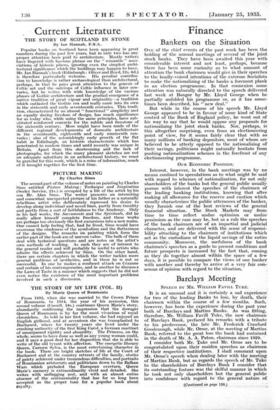Current Literature
THE STORY OF SCOTLAND IN STONE By Ian Hannah, F.S:A.
Popular books on Scotland have been appearing in great numbers during the past few years, but in only two has any proper attention been paid to architecture. Mostly writers have lingered with luscious phrase on the " romantic " asso- ciations of historic places, ignoring even the simplest archi- tectural significance which the buildings may happen to have. Mr. Ian Hannah's book (Edinburgh : Oliver and Boyd, 12s. 6d.) is therefore particularly welcome. His peculiar contribu- tion to knowledge is rather archaeological than architectural, perhaps, in that he pays great attention to the genesis of Celtic art and the outcrops of Celtic influence in later cen- turies, but he writes with wide knowledge of the various phases of Gothic architecture and the gradual emergence of a native tradition of great vigour and originality—a tradition which outlasted the Gothic era and really came into its own in the sixteenth and early seventeenth centuries. This tradi- tion, characterized by an almost " functional " simplicity and an equally daring freedom of design, has much significance for us today who, while using the same principles, have sub- stituted reinforced concrete for the rubble and freestone of the sixteenth century. More might have been made of the different regional developments of domestic architecture in the seventeenth, eighteenth and early nineteenth cen- turies ; also of the astonishingly early growth of the flat habit in Edinburgh, an historic characteristic which has penetrated to modern times and until recently was unique in Britain. Apart from this shortcoming and the lack of photographs, for which the many pleasant sketches are not an adequate substitute in an architectural history, we must be grateful for this work, which is a mine of information, much of it brought together for the first time.














































 Previous page
Previous page